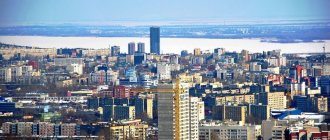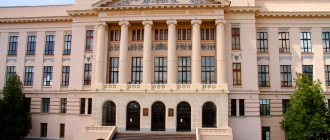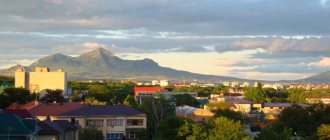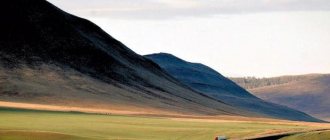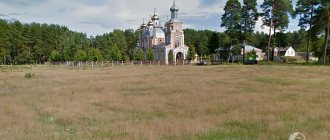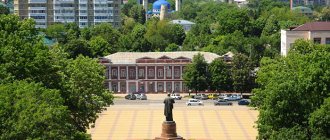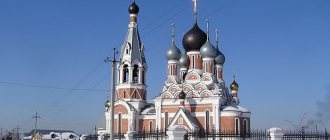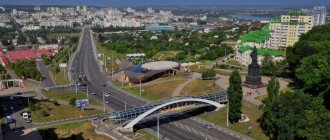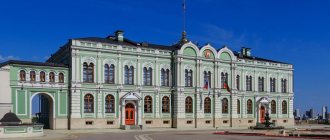Elabuga is an ancient and beautiful city on the banks of the Kama River, which flows in Tatarstan. Here you can find many historical attractions. Tourists flock here to appreciate the unusual architecture of the buildings and see with their own eyes the natural beauty of the flowing river.
There are few cities where you can find so many historical buildings. From military fortifications to church buildings, there is a lot to see here.
The city is located 200 km away. from the capital of Tatarstan, just at the confluence of the Toyma River and the Kama River, where a wide floodplain is formed. This is the center of the Elabuga region, forming an urban settlement and entering the Nizhne-Kama (Naberezhnye Chelny) agglomeration.
You can sign up for an excursion in one of the large Russian cities located in relative proximity to Yelabuga
From Yoshkar-Ola
From Kazan
From Cheboksary
The area of the city is slightly more than 40 km2, and the population exceeds 70 thousand people, so it cannot be called a very large urban center. At the same time, the good socio-economic development of this place is due to its favorable location, right at the intersection of important trade and economic routes. Thanks to this, historically many merchants, representatives of the clergy, artisans and other people came to Elabuga and contributed to the development of the city.
History of the development of Yelabuga
The year of foundation of the city is considered to be 1780, but in fact people lived in this place for over 100 years, since already in 1010 a large urban settlement was formed here, which is confirmed by a number of written sources. Despite this, scientists have not yet been able to establish a more precise date of settlement, however, there is information that the first settlements in this area could have been as early as the 5th century BC. This is confirmed by excavations of the Ananyinsky burial ground, where scientists were able to discover several artifacts.
In the first half of the 17th century, the first Christian monastery was built here - Trinity, which marked the beginning of a new era in the formation of the city as the spiritual center of the region. Just on the site of the modern city at the end of the 16th century there was a settlement of Trekhsvyatskoye, which numbered several thousand people. With the beginning of active construction of churches, the settlement gradually began to transform and in 1780 this place officially received the status of a county town at the behest of Empress Catherine II.
A very significant road ran here from Volga Bulgaria to the northern part of Russia, right up to the Arctic Ocean, so there were always many merchants in the city. Thanks to the skill of the architects, interesting stone buildings from the 17th-19th centuries have still been preserved here, which are of great interest to modern tourists. By the beginning of the 19th century, the city had turned into a large industrial zone, and 100 years later, in the 20th century, Elabuga became a leading city in the production of vehicles and spare parts. Today it is the largest industrial city, where several plants and factories operate, the production of agricultural machinery is established, and the oil industry is well developed.
Sights of Yelabuga
As you can already see, the history of the city goes back centuries, so it is not surprising that here you can find many ancient monuments - silent witnesses of those distant times. By the way, tourists will find it useful to know that they can build their own route for sightseeing, since the city is small in area.
It should be noted that from the river side there is an amazingly beautiful view of the city, not only in the daytime, but also in the dark. For this reason, many tourists come to the city by boat, taking excursions from nearby cities, including Kazan.
Embankment Street
It is best to start your walk from Naberezhnaya Street, which was founded in the second half of the 18th century and is considered the oldest. It is located at a considerable height, so it offers a beautiful view of the entire city, the river and distant forests.
St. Nicholas Church
This architectural structure was named in honor of St. Nicholas the Wonderworker and was originally made of wood. After the fire, it was rebuilt, but from stone, and in this form it has been well preserved to this day. A little later, the Church of the Epiphany was also erected next to it, and after some time they began to be considered a single architectural complex.
The heyday of St. Nicholas Church was the 70s. XIX, when its walls were richly painted by the artist V.V. Vereshchagin. Fortunately, most of these paintings are well preserved, and visitors to the church can admire them. In the St. Nicholas Church there are various icons, the most famous of which are the icons of the Wonderworker Nicholas and the Saint.
Spassky Cathedral
The church building was built at the beginning of the 19th century and today is an architectural symbol of the city of Elabuga. The majestic five-domed temple, made in the Russian classical style, reaches a height of 57 meters, and therefore is clearly visible from different parts of the city. The temple enjoyed special respect and veneration among all residents of the city, especially since its interior decoration was painted by such famous Russian artists as I.A. Bruni and V.V. Vereshchagin. During the construction of the temple, the merchants Chernov, Shishkin, Girbasov and Stakheev provided great financial assistance, so the church, even at the time of its construction, looked very beautiful and rich, was decorated with precious stones, gold and silver.
Unfortunately, after the revolution of 1917, the temple was destroyed, and its rector and church servants were shot. Miraculously, the icon of the miraculous image of the Savior Not Made by Hands, which currently adorns the Pskov Cathedral, survived. In the early 90s of the twentieth century, the cathedral was transferred to the Yelabuga deanery. In 2007, a major reconstruction was completed, as a result of which the temple was returned to its original appearance, so today many tourists arriving in Elabuga strive to visit this institution. By the way, every year the Spassky Cathedral takes part in the bell ringing festival.
Damn town
This is the most famous monument of Elabuga, representing the only evidence of the former greatness of Volga Bulgaria.
Here a tourist can see a whole complex of ditches, fortress walls and ramparts, but the main symbol of the place is the tower of the “Devil's Settlement”. It is a hollow stone building with a domed metal roof, which also has windows characteristic of buildings of that time.
It should be noted that the building was preserved in this form thanks to the assistance of the merchant I.V. Shishkin, who in 1867 organized work to recreate the original image of the tower. So the original masonry remains only on the north side and can be found by looking at the rough stones.
Jamig Mosque
A modern building, erected in 1992 and today the most famous monument of Islamic culture, built according to the design of the architect F. Sh. Galiev. The characteristic features of the stand include the rich decoration of the temple, the presence of a large number of carpets, and a large crystal chandelier. Services are held here every day and hundreds of Muslims seek to take part in prayers.
Kama River Basin
Beyond Kuliga, the Kama River runs through a continuous spruce-alder forest to the north, only occasionally touching small edges. The terrain creates a noticeable bias towards the water course. There are also minor bends. The flow of the Kama River in the Afanasyevsky district of the Kirov region gradually forms a stable channel 70-80 m wide. There is no longer a low edge, since now the river “body” is sandwiched by the hills of the Verkhnekamsk Upland. The settlements are very small. At Afanasyevo the river descends into a slightly swampy lowland. In the Verkhnekamsk region the floodplain goes only through swamps.
But in the Gainsky district of the Perm Territory, the Kama River basin smoothly takes a north-eastern azimuth. The Perm land meets the reservoir with pine forests. At the same time, the stream spreads over a flat lowland up to 300 meters wide, often forming fields and eriks. From the village of Gayny (in which there is a museum of Komi-Permyaks named after Sozonov), it moves (with a southern trough) to the east. And in Bondyuga it generally turns to the south, flowing around the mountain range. Its slopes up to 30 meters high “pursue” the Kama from the western side. With this orientation, the reservoir goes through the Cherdynsky district (absorbing Vishera) and the beginning of the Perm district (absorbing the water of Usolka). The width of the river is already up to a kilometer, and in the Solikamsk region some bays are up to 2 km. One side continues to remain high, sometimes dropping to only 10 meters. In the area of Bereznyaki and below, the flow of the Kama River “sucks in” a whole series of tributaries, expanding in places up to 7 kilometers, and the Kama reservoir between the Dobryansky and Ilyinsky districts already has a width from 4.5 to 12 kilometers. The forest becomes mixed. The reservoir, constantly narrowing, goes all the way to Perm. Here the Kama passes through a hydroelectric station and the Chusovaya River flows into it. And then its width for a long time does not exceed 1.5 km - until the confluence with the Ocher, where a 3-kilometer branch is formed. We are still talking about the vastness of the Perm region. At the historical settlement of Osa, the river enters the area of the same name, where the forests again become spruce-alder-birch. The right bank remains high. Having walked a little to the west, the reservoir again hurries south, acquiring a width of 5 km at the turn. Before Elovo it is already 6 km. Between Udmurtia and the urban district of Tchaikovsky (Perm Territory) the standard reaches 7. This is the dam of the Votkinsk hydroelectric station. And 19 kilometers from the right bank you can see the beautiful Votkinsk itself - the industrial symbol of Udmurtia. In Bashkortostan (left bank), the Kama River basin becomes 1.5-2 kilometers wide, and on the Udmurt-Bashkir border it absorbs the Belaya River, forming a floodplain measuring 16 by 25 kilometers (with dozens of oxbow lakes, lakes, water meadows and eriks). The high coast already resembles small mountains. From the thicket the reservoir emerges into the forest-steppe. In Tatarstan (where it is no longer the northern, but the southern taiga that dominates), the Kama is expanding again. This time up to 12 km. This refers to the Nizhnekamsk “sea”, located within 3 districts of the republic. Behind the “factory city” of Nizhnekamsk is the branch of Vyatka. In the lower reaches, the stream spreads throughout the valley, forming “shoots.” The channel is no more than 1200 m in diameter, and sometimes narrows to 450 m. In Elabuga there are Tanaevsky floodplain meadows and forests. During the May discharge of water, even the trees are covered to the very top. In the final section, the flow of the Kama River coincides with the lands of the administrative units of Tatarstan already indicated in the previous section, absorbing Mesha.
Other interesting places
House Museum of I. I. Shishkin
Grave of M. I. Tsvetaeva
Monument to N. A. Durova
We also recommend visiting the Museum of Local Lore, the monument to I. I. Shishkin, the Exhibition Hall of the Museum-Reserve, the House of N. A. Durova, the Al-Qadir Mosque and the Diocesan School.
What else can you visit in Elabuga?
While in the city on vacation, you should definitely visit the “1000th Anniversary of Yelabuga” Square, which was founded in honor of the city’s millennium in 2007. The park is located in a picturesque place, not far from the Devil's Settlement, and everything is decorated very beautifully.
There are plenty of benches and benches, well-equipped pedestrian and bicycle paths, and outdoor lighting installed. Natural monuments also include Krasnaya Gorka and Svyatoy Klyuch, where there is a spring with clean water.
In conclusion, it is worth noting that in Elabuga there is no trolleybus or tram service, and there is also no airport. Most often, people come here by excursion buses, private cars and by boat on the Kama River. Thanks to the beautiful architecture, there is something to see in Yelabuga and you can have a great time in your free time.
Fishing and hunting on the Kama River
What kind of fishing is the Kama River preparing for us? Fishing is the number one leisure activity here. Its waters are home to such ichthyofauna as pike, perch, and ruff. White bream, bleak, pike perch, asp, carp, crucian carp, chub. Catfish, grayling, taimen and sturgeon (may come from the Volga). The event, which men love, can be done with virtually any bait, even bread. Good outings on rubber boats. The Kama River is also rich in fishing bases. Fishing has comfortable equipment and paid infrastructure in “Kama Expanses”, “Rus”, “Berezhka” and “KZN Fishing”. Speaking about simple shores, we will point out, first of all, the backwater named after Kuibyshev and the Nizhnekamsk reservoir. In second positions are the capes near Laishevo, Rybnaya Sloboda, Alekseevsky, Gadyukino, Maslovka, Elabuga and in the Kriushi loan. Finally, the middle current also attracts people - Perm residents are fans of gear. The tracts have received flattering reviews from those who are interested in a truly masculine activity.
Now you understand that the Kama River is also famous for its “wild” commercial backwaters. Fishing has strict prohibitions related only to hydroelectric power station sites and penetration (especially by transport) into the water protection zone, which runs side by side with the so-called “strategic” perimeter. Therefore, be careful. At the same time, you should be wary of inspectors from the Ministry of Natural Resources from April to June. There are also plenty of spawning holes in the riverbed. Don't forget about the phenomenon of winter fishing. Ice gatherings are typical for cities.
Telling about how the Kama River is useful for a vacationer, fishing is optimally considered together with hunting. Because “glue” banks are often sections of different lands. Don't forget: the water flow predominantly crosses the thickets. The main hunting reserves at the junction with the river floodplain are “Kuibyshev Society of Hunters and Fishers”, “Kama Coast”, “Wild Farm”, “Bersut”, “Omara”, “Svinogorye”, “Lebyazhye”, “Ilimsky Bor”, “Yarskoe” ", "Kambarskoye", "Sarapulskoye", "Karakulinskoye", "Votkinskoye", as well as many mapped Permyak massifs. The king of game animals on the Kama is the wild boar. Behind him come the bear, elk, waterfowl and forest game, brown hare, fox, raccoon dog and polecat. And the deer closes the list...
